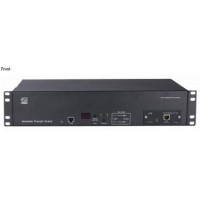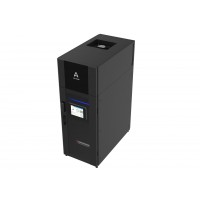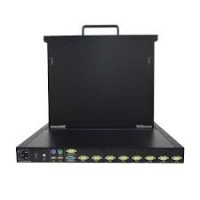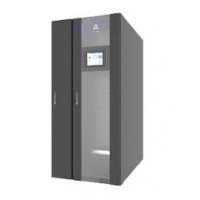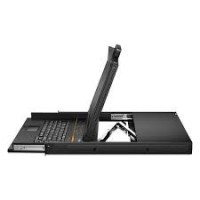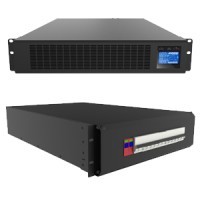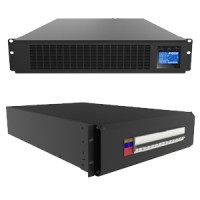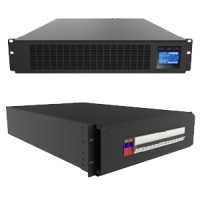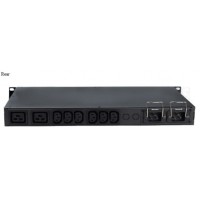No products
Data Centre Solutions
New products
-

BlackCopper BC-EGP-10G015-Z
Transform Your Business with BlackCopper BC-EGP-10G015-Z Dual Screen POS...
Rs 0
Attom Data Centre Solutions: Your Path to Digital Dominance
In the modern digital landscape, data centers are the lifeblood of businesses, powering everything from cloud services to critical applications. Attom understands this critical role and offers a comprehensive suite of data center solutions designed to meet the unique needs of businesse...
Attom Data Centre Solutions: Your Path to Digital Dominance
In the modern digital landscape, data centers are the lifeblood of businesses, powering everything from cloud services to critical applications. Attom understands this critical role and offers a comprehensive suite of data center solutions designed to meet the unique needs of businesses across Pakistan.
Attom goes beyond simply providing infrastructure. We deliver a complete ecosystem of services, ensuring your data center operates efficiently, reliably, and securely. Our solutions include:
Cutting-Edge Infrastructure:
- High-Density Power Systems: We deploy state-of-the-art power systems, ensuring uninterrupted power supply and optimal efficiency for your mission-critical applications.
- Advanced Cooling Solutions: We implement intelligent cooling strategies that guarantee optimal thermal management, minimizing energy consumption and maximizing uptime.
- High-Speed Networking: Our network infrastructure is built for speed and reliability, enabling seamless data exchange and fast application performance.
- Resilient Security Systems: Attom prioritizes data security. Our systems provide robust physical and cyber security measures to protect your valuable assets.
Expert Management and Support:
- 24/7 Monitoring and Support: Our expert team is available around the clock to ensure your data center operates seamlessly. We offer proactive monitoring and swift resolution of any issues.
- Tailored Solutions: We understand that every business has unique requirements. Attom provides customized solutions that align with your specific needs and budget.
- Proactive Maintenance: We implement a preventative maintenance program to minimize downtime and ensure the long-term health of your data center.
- Scalability and Flexibility: As your business grows, Attom's solutions can easily scale to meet your evolving demands, ensuring uninterrupted operations.
Partnering with MB Communication for Data Center Excellence:
MB Communication, a leading provider of technology solutions in Pakistan, recognizes the importance of reliable and secure data centers. They trust Attom as their preferred partner for data center solutions, leveraging our expertise and innovation to empower their clients' digital journeys.
Attom is committed to delivering cutting-edge solutions that enable businesses to thrive in the digital age. We partner with businesses like MB Communication to build robust data center infrastructures that support their growth and success.
Contact Attom today to discuss how we can help you build a data center that empowers your business's digital transformation.
Data Centre Solutions There are 9 products.
Subcategories
-
LTS
LTS: The Future of Network Infrastructure
The world is becoming increasingly reliant on digital infrastructure. As businesses and individuals rely more on the internet for communication, commerce, and entertainment, the demand for reliable and efficient networks is growing rapidly. This is where LTS comes in. LTS, or Long-Term Service, is a new approach to network infrastructure that is designed to meet the demands of the future.
What is LTS?
LTS is a comprehensive approach to network infrastructure that focuses on providing long-term value and reliability. It involves a combination of hardware, software, and services that are designed to work together seamlessly. Some key features of LTS include:
- High-performance hardware: LTS uses cutting-edge hardware that is built for speed, reliability, and efficiency.
- Advanced software: LTS leverages advanced software solutions to automate network management, improve performance, and enhance security.
- Predictive maintenance: LTS uses data analytics to predict potential problems before they occur, minimizing downtime and ensuring uninterrupted service.
- Flexible scaling: LTS allows for easy and efficient scaling of network capacity to meet changing demands.
- Security focus: LTS prioritizes security with features like intrusion detection, advanced firewalls, and data encryption.
Benefits of LTS
The benefits of adopting LTS are numerous, particularly for businesses and organizations that rely heavily on digital infrastructure. These benefits include:
- Increased network uptime: LTS ensures minimal downtime by proactively addressing potential issues, resulting in greater business continuity.
- Improved performance: With its focus on high-performance hardware and software, LTS delivers faster speeds and more efficient network operations.
- Reduced operational costs: LTS reduces operational costs by automating tasks and simplifying network management, freeing up IT resources for other strategic initiatives.
- Enhanced security: LTS provides a robust security framework that protects sensitive data and minimizes the risk of cyberattacks.
- Future-proofed infrastructure: LTS is designed to meet the evolving needs of modern businesses, ensuring that your network can handle the demands of the future.
LTS and Attom
Attom is a leading provider of LTS solutions. We offer a comprehensive portfolio of hardware, software, and services that are designed to deliver the highest level of network performance, reliability, and security. Our team of experts can help you design, implement, and manage your LTS solution, ensuring that your network is always ready to meet your business needs.
Conclusion
LTS is the future of network infrastructure. By embracing LTS, businesses and organizations can ensure that their networks are reliable, scalable, and secure, enabling them to thrive in the digital age. Partnering with a trusted LTS provider like Attom can help you navigate this transformation and unlock the full potential of your network infrastructure.
MB Communication is committed to helping businesses leverage the power of LTS. We understand the importance of reliable and efficient networks for today's businesses and we are dedicated to providing our clients with the best possible solutions.
Contact us today to learn more about how LTS can benefit your business.
-
KVM
Attom KVM Solutions: A Comprehensive Guide
In the dynamic world of technology, managing multiple devices efficiently is paramount. KVM (Keyboard, Video, Mouse) solutions play a crucial role in simplifying this task, enabling users to control numerous computers from a single console. Attom, a leading brand in the KVM industry, offers a diverse range of products tailored to meet the diverse needs of businesses and organizations.
Why Choose Attom KVM?
Attom KVM solutions stand out for their exceptional features and benefits. They are designed to enhance productivity, streamline operations, and provide unparalleled control over your IT infrastructure. Here's why Attom is a trusted choice:
- Enhanced Efficiency: Attom KVMs allow you to manage multiple computers from a single console, eliminating the need for multiple keyboards, mice, and monitors. This streamlined approach saves valuable time and space, boosting overall efficiency.
- Simplified Management: With centralized control, managing your IT infrastructure becomes remarkably easier. You can access and control all connected computers from a single point, simplifying system administration and troubleshooting.
- Improved Security: Attom KVM solutions offer enhanced security features, safeguarding your valuable data and systems. Advanced security protocols ensure that only authorized personnel have access to the connected computers.
- Scalability and Flexibility: Attom KVMs are designed to scale with your business needs. You can easily expand your system by adding more computers or devices, ensuring future-proof scalability.
- Reliability and Performance: Attom KVMs are renowned for their reliability and performance. They deliver smooth video and data transmission, ensuring consistent performance for all connected devices.
Types of Attom KVM Solutions
Attom offers a wide range of KVM solutions to cater to different applications and requirements. Here are some common types:
1. Matrix KVM Switches:
Matrix KVM switches provide advanced connectivity and control over multiple computers. They offer flexibility in switching between different computers and allow for multiple users to access the connected devices simultaneously.
2. IP KVM Switches:
IP KVM switches enable remote access and control of computers over a network connection. This feature is ideal for managing servers in different locations or for out-of-band access to critical systems.
3. Digital KVM Switches:
Digital KVM switches offer high-resolution video and data transmission, delivering crisp and clear visuals. They are suitable for demanding applications requiring high-quality video output.
4. USB KVM Switches:
USB KVM switches are a convenient and affordable option for managing a small number of computers. They utilize USB connectivity for both video and data transmission.
Applications of Attom KVM Solutions
Attom KVM solutions find applications in a wide range of industries and scenarios. They are ideal for:
- Data Centers: KVM switches are essential in data centers for centralized management of server farms, ensuring efficient operations and security.
- Financial Institutions: Financial institutions rely on KVM switches to manage critical systems, providing secure and reliable access to financial data.
- Broadcast Studios: KVM switches are crucial in broadcast studios for controlling multiple cameras, editing workstations, and other equipment.
- Government Agencies: Government agencies utilize KVM solutions to manage critical infrastructure and sensitive information, ensuring secure and reliable access.
- Educational Institutions: Educational institutions employ KVM switches to manage computer labs, providing students with shared access to resources.
Partner with MB Communication for Attom KVM Solutions
MB Communication is a trusted provider of Attom KVM solutions. Our team of experts can help you choose the right KVM system for your specific needs. We offer comprehensive support, including installation, configuration, and ongoing maintenance.
Contact MB Communication today to discuss your KVM requirements. Let us help you optimize your IT infrastructure with Attom's innovative and reliable KVM solutions.
-
Racks & Cooling
Racks & Cooling: Essential Components for Your Data Center
In the world of technology, data centers are the backbone of operations. They house the critical infrastructure that keeps businesses running smoothly. Within these data centers, two key components play a vital role in ensuring optimal performance and reliability: racks and cooling. These systems work in tandem to provide a secure and stable environment for your valuable equipment.
Understanding Racks: The Foundation of Your Data Center
Data center racks serve as the structural framework for housing servers, networking equipment, and other essential hardware. They provide a robust and organized system for managing your IT infrastructure.
Types of Data Center Racks
There are various types of data center racks available, each with its own unique features and benefits. Some common types include:
- Open Racks: These racks offer maximum flexibility and accessibility, allowing for easy installation and maintenance of equipment.
- Enclosed Racks: Enclosed racks provide greater security and environmental control, minimizing the risk of unauthorized access and temperature fluctuations.
- Wall-Mount Racks: Ideal for smaller deployments or limited space, these racks mount directly to the wall, saving valuable floor space.
- Cabinet Racks: These enclosed cabinets provide enhanced security and environmental control, often used for high-density deployments.
Rack Selection Factors
When choosing the right racks for your data center, consider these important factors:
- Capacity and Weight: Determine the weight and space requirements of your equipment to ensure the rack can handle the load.
- Height and Width: Select racks that fit your physical space constraints while accommodating the dimensions of your equipment.
- Ventilation and Cable Management: Ensure adequate airflow and proper cable organization to prevent overheating and maintain accessibility.
- Security Features: Consider features like locking mechanisms, access control, and physical security to protect your valuable equipment.
Cooling: Maintaining a Stable Operating Environment
Cooling systems are essential for maintaining optimal operating temperatures within your data center. Excessive heat can lead to equipment failure, performance degradation, and even data loss.
Types of Data Center Cooling Systems
Different types of cooling systems are available, each with its own advantages and disadvantages. Some common options include:
- Air Conditioning (HVAC): Traditional HVAC systems use a central chiller to cool air and distribute it throughout the data center. They are often effective but can be energy-intensive.
- In-Row Cooling: This system places cooling units in the aisles between racks, directly cooling the equipment. It offers greater efficiency and better temperature control.
- Air-Cooled Chillers: These systems use air as a coolant, making them more energy-efficient than water-cooled systems.
- Liquid Cooling: This method uses liquid to directly cool the equipment, offering the most efficient and reliable cooling solution but with higher initial costs.
Cooling System Selection Factors
Several factors should be considered when choosing a cooling system for your data center:
- Heat Load: Determine the total heat generated by your equipment to select a system with sufficient cooling capacity.
- Efficiency and Energy Consumption: Choose a system that balances cooling performance with energy efficiency to minimize operating costs.
- Reliability and Redundancy: Ensure the system is reliable and has redundancy features to prevent downtime in case of failure.
- Environmental Considerations: Consider the environmental impact of the cooling system, including water consumption and energy usage.
The Importance of Integration
Racks and cooling systems are not independent entities. They must work together seamlessly to provide a stable and efficient operating environment for your data center. Careful planning and integration are crucial for optimizing performance and reliability.
MB Communication understands the importance of these systems in the overall performance of your data center. We offer comprehensive solutions that combine high-quality racks and cooling systems, ensuring your IT infrastructure operates at peak efficiency.
For more information on how MB Communication can help you build a secure and reliable data center environment, contact us today.
-
Micro Data Center
Micro Data Centers: The Future of IT Infrastructure
In the rapidly evolving world of technology, businesses are constantly seeking ways to enhance their IT infrastructure, optimize performance, and achieve greater agility. Micro data centers are emerging as a compelling solution, offering numerous advantages over traditional data centers. This comprehensive guide will delve into the intricacies of micro data centers, exploring their benefits, key features, and how they are revolutionizing the IT landscape.
What are Micro Data Centers?
Micro data centers, often referred to as edge data centers, are compact and self-contained IT facilities designed to deliver computing power, storage, and network connectivity at the edge of the network. Unlike traditional data centers, which are typically large, centralized facilities, micro data centers are smaller and can be deployed in various locations, including offices, retail stores, factories, and even remote areas.
Key Features of Micro Data Centers
Micro data centers are characterized by several key features that contribute to their effectiveness:
- Compact Size: Micro data centers are significantly smaller than traditional data centers, allowing for flexible deployment in various spaces.
- Modular Design: They are modular, enabling businesses to scale their IT infrastructure easily by adding or removing components as needed.
- High Density: Micro data centers pack a significant amount of computing power and storage into a small footprint, maximizing efficiency.
- Pre-Configured Solutions: Many micro data center vendors offer pre-configured solutions, simplifying deployment and reducing setup time.
- Enhanced Security: Micro data centers often incorporate robust security measures, including physical access control, network security, and data encryption.
Benefits of Micro Data Centers
Micro data centers offer numerous benefits, making them an attractive alternative to traditional data centers:
- Reduced Latency: By placing data centers closer to users and applications, micro data centers minimize latency, improving performance and user experience.
- Increased Agility: Micro data centers are highly flexible and can be deployed quickly, enabling businesses to respond rapidly to changing IT needs.
- Improved Scalability: The modular design of micro data centers allows for easy scaling, enabling businesses to add capacity as their needs grow.
- Cost-Effectiveness: Micro data centers can be more cost-effective than traditional data centers, especially for smaller businesses or those with geographically dispersed operations.
- Enhanced Reliability: With redundant power and cooling systems, micro data centers offer high availability and reliability.
Applications of Micro Data Centers
Micro data centers are finding applications across various industries, including:
- Retail: Enhancing point-of-sale systems, inventory management, and customer experience.
- Manufacturing: Optimizing production processes, real-time data analytics, and machine learning.
- Healthcare: Enabling telehealth, medical imaging, and patient data management.
- Financial Services: Ensuring low latency for trading platforms, risk management, and customer service.
- Education: Supporting online learning platforms, research initiatives, and campus-wide network connectivity.
Challenges of Micro Data Centers
While micro data centers offer numerous advantages, they also present some challenges:
- Power and Cooling: Managing power and cooling in a confined space can be a challenge, requiring careful planning and design.
- Security: Ensuring the physical and cybersecurity of micro data centers is crucial, especially in remote or less secure environments.
- Management and Monitoring: Monitoring and managing distributed micro data centers can be complex, requiring robust management tools and expertise.
Future Trends in Micro Data Centers
The future of micro data centers is bright, with several trends shaping the industry:
- Edge Computing: The rise of edge computing will drive the adoption of micro data centers, enabling applications to be processed closer to users and devices.
- Artificial Intelligence (AI): AI and machine learning are increasingly reliant on edge computing, fueling the growth of micro data centers.
- Internet of Things (IoT): The proliferation of IoT devices will generate massive amounts of data, requiring micro data centers to handle the processing and storage demands.
- 5G Technology: The rollout of 5G networks will further accelerate edge computing and the adoption of micro data centers.
Conclusion
Micro data centers are transforming the IT landscape, offering numerous benefits for businesses of all sizes. Their compact design, high density, modularity, and enhanced security make them an attractive alternative to traditional data centers. As edge computing continues to gain traction, micro data centers are poised to play a critical role in enabling digital transformation, driving innovation, and enhancing the user experience.
If you are considering adopting micro data centers, it is essential to partner with a reputable vendor that offers comprehensive solutions, expert guidance, and ongoing support. MB Communication can help you navigate the complex world of micro data centers, providing the expertise and resources you need to optimize your IT infrastructure and achieve your business goals.
-
Structured Cabling
Structured Cabling: The Foundation of a Reliable Network
In today's technology-driven world, a reliable and efficient network infrastructure is paramount for any organization. Structured cabling serves as the backbone of this infrastructure, providing the foundation for seamless communication, data transfer, and connectivity. At MB Communication, we understand the importance of a robust and future-proof cabling system, and we offer comprehensive structured cabling solutions tailored to meet the unique needs of our clients.
Understanding Structured Cabling
Structured cabling refers to a standardized and systematic approach to cabling installations within a building or campus. It involves the use of high-quality cables, connectors, and equipment to create a structured network infrastructure that can support various applications and technologies. This structured approach ensures flexibility, scalability, and ease of management for the long term.
Key Components of a Structured Cabling System
- Horizontal Cabling: This comprises the cabling that runs from the telecommunications room (TR) to the work areas, such as workstations, devices, and outlets.
- Vertical Cabling: This refers to the cabling that connects different floors or sections of a building, including the backbone cabling that runs between TRs.
- Telecommunications Room (TR): This is the central point of the structured cabling system, where all cables are terminated and managed.
- Equipment Room (ER): This room houses the active equipment, such as network switches, routers, and servers.
Benefits of Structured Cabling
Investing in structured cabling offers numerous advantages for businesses and organizations:
- Enhanced Reliability and Performance: The use of high-quality materials and standardized practices ensures reliable data transmission and network performance.
- Scalability and Flexibility: A structured cabling system is designed to accommodate future growth and technological advancements, allowing for easy expansion and changes.
- Reduced Downtime and Maintenance Costs: The organized and standardized approach minimizes troubleshooting and maintenance efforts, reducing downtime and operational costs.
- Improved Security: Structured cabling incorporates security measures such as cable management systems and access control, enhancing network security.
- Increased Productivity and Efficiency: A well-designed cabling infrastructure optimizes communication and data flow, boosting productivity and efficiency throughout the organization.
Types of Structured Cabling
Structured cabling systems are categorized based on the cable type and application. Some common types include:
- Twisted Pair Cabling: This is the most widely used type of cabling, offering cost-effectiveness and versatility for various applications.
- Coaxial Cabling: Coaxial cables are used for high-speed data transmission and are often employed in video and audio systems.
- Fiber Optic Cabling: Fiber optic cables offer exceptional bandwidth capacity, security, and long distances, making them suitable for high-performance networks.
Choosing the Right Structured Cabling Solution
Selecting the appropriate structured cabling solution depends on various factors, including the size of the organization, network requirements, budget, and future growth plans. MB Communication provides expert consulting services to help you choose the optimal solution that aligns with your specific needs and goals. Our team of experienced professionals will assess your existing infrastructure, understand your requirements, and recommend the best cabling system for your organization.
Whether you're establishing a new network infrastructure or upgrading your existing one, MB Communication offers comprehensive structured cabling solutions that deliver reliability, performance, and scalability. Contact us today to discuss your specific requirements and benefit from our expertise in designing, installing, and managing structured cabling systems.
-
Power Distribution
Power Distribution: A Comprehensive Guide to Reliable Electricity
The efficient delivery of electrical power is the backbone of modern society. From powering homes and businesses to supporting critical infrastructure, power distribution plays a vital role in our daily lives. This comprehensive guide will delve into the intricacies of power distribution, covering key concepts, technologies, and considerations for ensuring reliable and efficient electricity supply.
Understanding Power Distribution Systems
A power distribution system is a network of interconnected components that facilitate the transmission of electricity from power generation sources to end-users. It involves:
- Generation: The process of producing electricity from various sources like fossil fuels, renewable energy, or nuclear power.
- Transmission: High-voltage transmission lines transport electricity over long distances from generating stations to distribution substations.
- Distribution: Substations reduce the voltage and distribute electricity to local areas through distribution networks.
- Consumption: End-users, including homes, businesses, and industries, consume electricity for various purposes.
Key Components of Power Distribution Systems
1. Substations
Substations act as crucial intermediaries in the power distribution process. They reduce high-voltage electricity from transmission lines to lower voltages suitable for local distribution. Substations typically contain:
- Transformers: Devices that alter the voltage of electricity.
- Circuit Breakers: Safety devices that interrupt electrical flow in case of faults.
- Switchgear: Equipment that controls and protects electrical circuits.
2. Distribution Lines
Distribution lines, often referred to as feeders, carry electricity from substations to consumers. They are typically constructed using:
- Overhead Lines: Power lines mounted on poles or towers.
- Underground Cables: Insulated cables buried beneath the ground.
3. Transformers
Transformers are essential for converting high-voltage electricity to lower voltages suitable for household and industrial use. They work on the principle of electromagnetic induction to change the voltage without altering the power.
Types of Power Distribution Systems
Power distribution systems can be classified into various types based on their voltage levels, network configurations, and intended applications. Here are some common types:
- Radial System: A simple system where power flows from the substation to consumers along a single path.
- Loop System: A more reliable system with multiple paths for power flow, providing redundancy in case of failures.
- Network System: A highly interconnected system that allows for flexible power flow and improved reliability.
Challenges and Trends in Power Distribution
The power distribution sector faces several challenges, including:
- Increasing Demand: Growing populations and economic development drive an increase in electricity demand.
- Aging Infrastructure: Many existing power distribution systems are aging and require upgrades or replacements.
- Integration of Renewable Energy: Incorporating renewable energy sources, such as solar and wind power, presents challenges in managing intermittent power supply.
- Cybersecurity Threats: Power distribution systems are increasingly vulnerable to cyberattacks, requiring enhanced security measures.
To address these challenges, the power distribution sector is embracing various trends, including:
- Smart Grid Technologies: Advanced technologies that enhance grid efficiency, reliability, and control.
- Distributed Generation: Decentralizing power generation closer to consumers, reducing transmission losses.
- Microgrids: Localized energy systems that can operate independently from the main grid, providing resilience.
The Importance of Reliable Power Distribution
A reliable power distribution system is paramount for:
- Economic Growth: Reliable electricity is essential for businesses to operate efficiently and for industries to thrive.
- Public Safety: Power outages can disrupt critical services like hospitals, emergency response systems, and communication networks.
- Quality of Life: Reliable electricity powers our homes, appliances, entertainment systems, and communication devices, enhancing our quality of life.
MB Communication: Your Partner for Reliable Power Solutions
MB Communication is a leading provider of power distribution solutions, committed to delivering reliable and efficient electricity to our customers. Our expertise spans various aspects of power distribution, including:
- Substation Design and Construction
- Distribution Line Installation and Maintenance
- Transformer Supply and Services
- Smart Grid Solutions
We are dedicated to providing innovative and sustainable power distribution solutions that meet the evolving needs of our customers. Our commitment to excellence, combined with our deep understanding of power distribution technologies, enables us to deliver reliable power for a brighter future.
-
Security
The Ultimate Guide to Cybersecurity in the Digital Age
In today's interconnected world, where our lives are increasingly reliant on digital technology, cybersecurity has become paramount. From personal data to sensitive corporate information, the stakes are high, and safeguarding our digital assets is more crucial than ever. This comprehensive guide will delve into the essential aspects of cybersecurity, equipping you with the knowledge and tools to navigate the ever-evolving threat landscape.
Understanding the Cybersecurity Landscape
The digital world is constantly evolving, with new technologies and threats emerging at an alarming pace. It's essential to understand the landscape before diving into the intricacies of cybersecurity.
Types of Cyber Threats
- Malware: Malicious software designed to harm or steal data. Examples include viruses, worms, ransomware, and Trojans.
- Phishing: Deceitful attempts to obtain sensitive information through fraudulent emails, websites, or messages.
- Social Engineering: Manipulating individuals into revealing confidential information or granting unauthorized access.
- Denial-of-Service (DoS) Attacks: Overwhelming a target system with traffic, making it inaccessible to legitimate users.
- Data Breaches: Unauthorized access to sensitive data, leading to theft, misuse, or corruption.
Vulnerabilities and Exploits
Cybersecurity threats often exploit vulnerabilities in software, hardware, or human behavior. These vulnerabilities can be exploited by attackers to gain unauthorized access or disrupt systems.
The Role of Cybersecurity Professionals
Cybersecurity professionals play a crucial role in protecting organizations and individuals from digital threats. They are responsible for implementing security measures, responding to incidents, and educating users about best practices.
Essential Cybersecurity Best Practices
Implementing robust cybersecurity practices is vital for mitigating risks and safeguarding your digital assets. Here are some fundamental steps to take:
Strong Passwords
Use strong, unique passwords for all your online accounts. A strong password should be at least 12 characters long and include a mix of uppercase and lowercase letters, numbers, and symbols.
Multi-Factor Authentication (MFA)
Enable MFA whenever possible to add an extra layer of security. MFA requires users to provide multiple forms of authentication, such as a password and a code sent to their phone.
Regular Software Updates
Keep your operating systems, applications, and software up to date with the latest security patches. Updates often include fixes for vulnerabilities that could be exploited by attackers.
Antivirus and Anti-Malware Software
Install reputable antivirus and anti-malware software on all your devices. These programs can detect and remove malicious software, protecting your systems from threats.
Firewall Protection
Use a firewall to block unauthorized access to your network or device. A firewall acts as a barrier, filtering incoming and outgoing network traffic.
Data Backup and Recovery
Regularly back up your important data to ensure its recovery in case of a system failure or data breach. Implement disaster recovery plans to restore critical data and systems.
Employee Training and Awareness
Educate your employees about cybersecurity threats and best practices. Regularly conduct training sessions to enhance awareness and minimize the risk of human error.
Security Audits
Conduct regular security audits to assess your organization's cybersecurity posture. Audits help identify vulnerabilities and weaknesses, enabling you to take proactive steps to mitigate risks.
The Importance of Cybersecurity for Businesses
For businesses, cybersecurity is not just an IT concern but a strategic imperative. Cyberattacks can have devastating consequences, leading to financial losses, reputational damage, and regulatory penalties. Strong cybersecurity measures are essential for protecting business assets, ensuring operational continuity, and maintaining customer trust.
Protecting Customer Data
Businesses have a responsibility to protect their customers' personal and financial information. Data breaches can result in significant financial losses, legal liabilities, and erosion of customer trust.
Maintaining Operational Continuity
Cyberattacks can disrupt business operations, leading to downtime, lost productivity, and revenue loss. Robust cybersecurity measures are essential for ensuring business continuity and resilience.
Protecting Intellectual Property
Cybercriminals often target intellectual property, such as trade secrets, designs, and patents. Protecting intellectual property is crucial for maintaining a competitive edge and preventing financial losses.
Compliance with Regulations
Many industries are subject to stringent data privacy and security regulations, such as the General Data Protection Regulation (GDPR) and the California Consumer Privacy Act (CCPA). Businesses must comply with these regulations to avoid fines and legal penalties.
MB Communication: Your Trusted Cybersecurity Partner
At MB Communication, we understand the critical role of cybersecurity in the digital age. We offer comprehensive cybersecurity solutions tailored to meet the unique needs of our clients. Our team of experts provides expert guidance, implementation, and support, helping organizations strengthen their defenses against evolving threats.
Conclusion
Cybersecurity is an ongoing journey, not a destination. The threat landscape is constantly evolving, requiring vigilance, proactive measures, and continuous adaptation. By implementing robust security practices, staying informed, and partnering with trusted cybersecurity providers, organizations and individuals can navigate the digital world with confidence, safeguarding their assets and protecting their interests.
-
UPS
Uninterruptible Power Supply (UPS) Explained: A Comprehensive Guide
In today's digital age, relying on a stable and consistent power supply is crucial. Whether you're running a small business, a home office, or simply want to protect your valuable electronics, an Uninterruptible Power Supply (UPS) is an essential investment. This comprehensive guide will explain everything you need to know about UPS systems, their types, features, and how they can benefit you.
What is a UPS?
A UPS is a device that provides backup power to your electrical equipment in the event of a power outage. It essentially acts as a bridge between your main power source and your connected devices, ensuring a continuous flow of electricity even when the power goes out.
How does a UPS work?
UPS systems work by storing energy in batteries, typically lead-acid batteries. When a power outage occurs, the UPS seamlessly switches to battery power, keeping your devices running uninterrupted. The duration of this backup power depends on the capacity of the batteries and the power consumption of the connected devices.
Types of UPS Systems
UPS systems are categorized into various types based on their power output, features, and applications. Here's a breakdown of the most common types:
- Online UPS: These are the most advanced and reliable UPS systems, providing continuous, clean power to connected devices. They operate on a double conversion system, converting AC power to DC and then back to AC, ensuring constant voltage and frequency regulation.
- Standby UPS: Also known as offline UPS, these systems are the most budget-friendly option. They only switch to battery power when a power outage occurs, resulting in a short interruption before backup power kicks in.
- Line-Interactive UPS: This type offers a balance between online and standby UPS features. They provide voltage regulation and some protection against power surges, but the switching to battery power may not be as seamless as with online systems.
Key Features of UPS Systems
Here are some essential features to consider when choosing a UPS system:
- Power Capacity: Measured in volt-amperes (VA) or watts (W), this determines the total power the UPS can deliver to connected devices. Choose a UPS with enough capacity for your specific needs.
- Battery Backup Time: This refers to the duration the UPS can provide backup power during an outage. Battery backup time varies based on the battery capacity and the power consumption of the connected devices.
- Voltage Regulation: UPS systems help regulate voltage fluctuations, protecting sensitive electronics from damage caused by power surges or dips.
- Surge Protection: Most UPS systems offer built-in surge protection, safeguarding your devices from sudden voltage spikes.
- Output Waveform: This refers to the shape of the AC waveform generated by the UPS. Pure sine wave output is the most ideal for sensitive equipment, ensuring smooth and stable power.
- Connectivity Options: Look for UPS systems with multiple connectivity options, such as USB, serial, or network ports, for easy monitoring and configuration.
Benefits of Using a UPS
Investing in a UPS system provides numerous benefits, including:
- Protection against Power Outages: UPS systems ensure continuous power to your critical equipment during power interruptions, preventing data loss, system crashes, or downtime.
- Data Protection: UPS systems safeguard your data by providing uninterrupted power to servers, computers, and other critical data storage systems.
- Equipment Protection: Voltage fluctuations and surges can damage sensitive electronics. UPS systems regulate voltage and offer surge protection, extending the lifespan of your devices.
- Improved Productivity: Minimizing downtime during power outages allows you to maintain uninterrupted productivity, especially for businesses and home offices that rely on computer systems.
Choosing the Right UPS for You
Selecting the right UPS system depends on your specific needs and requirements. Consider the following factors:
- Power Consumption: Calculate the total power consumption of all devices you plan to connect to the UPS.
- Backup Time: Determine the minimum backup time required for your applications and devices.
- Type of Devices: The type of devices you plan to protect will influence your choice of UPS features.
- Budget: UPS systems range in price, so consider your budget constraints.
Conclusion
In today's technology-driven world, an Uninterruptible Power Supply (UPS) is an essential investment for both businesses and individuals. It provides a reliable and secure power backup solution, protecting your valuable equipment, data, and productivity. By understanding the different types of UPS systems, their features, and how they work, you can choose the right UPS for your specific needs and ensure uninterrupted power to your critical devices.
MB Communication is a trusted provider of UPS systems, offering a wide range of solutions to meet your power protection needs. Contact MB Communication today to discuss your requirements and find the right UPS for your application.
-
Cable Management
Cable Management: A Comprehensive Guide to Taming Your Wires
In today's world, technology has become an integral part of our lives. From our homes to our offices, we are surrounded by a vast network of cables and wires that power our devices and connect us to the digital world. While these cables are essential, they can also create a tangled mess, leading to clutter, safety hazards, and even performance issues.
This is where cable management comes in. Cable management is the process of organizing and containing cables and wires to ensure safety, efficiency, and aesthetics. It involves using various tools and techniques to route, secure, and protect cables, making them less prone to damage, tripping hazards, and unsightly clutter.
Benefits of Cable Management
The benefits of implementing a good cable management system are numerous. Here are some key advantages:
- Improved Safety: Taming your cables minimizes tripping hazards, preventing accidents and injuries. Organized cables also reduce the risk of electrical fires by ensuring proper airflow and preventing overheating.
- Enhanced Aesthetics: A clutter-free environment is aesthetically pleasing. Well-managed cables can transform a chaotic workspace into a clean and professional one.
- Improved Performance: Organized cables ensure proper signal transmission, leading to improved performance for electronic devices. This is especially crucial for high-speed data networks and audio/video systems.
- Increased Durability: Properly managed cables are less likely to be damaged, prolonging their lifespan and reducing the need for frequent replacements.
- Simplified Maintenance: When cables are organized, identifying and troubleshooting issues becomes much easier, saving time and effort.
Types of Cable Management Solutions
There are various cable management solutions available, each designed to address specific needs. Here are some of the most common options:
1. Cable Ties
Cable ties, also known as zip ties, are simple yet effective tools for bundling and securing cables together. They come in various sizes and materials, making them suitable for various applications.
Advantages:
- Affordable and readily available.
- Easy to use and secure.
- Offer flexibility in routing cables.
2. Cable Sleeves
Cable sleeves are flexible tubes that enclose and protect cables, preventing tangling and improving aesthetics. They are often used in conjunction with other cable management solutions like cable ties.
Advantages:
- Offer a clean and organized look.
- Provide additional protection from abrasion and dust.
- Available in a range of colors and materials.
3. Cable Trays
Cable trays are open channels designed to support and organize cables. They are typically made from metal or plastic and come in different sizes and configurations.
Advantages:
- Ideal for larger cable bundles and high-volume applications.
- Offer robust support and protection for cables.
- Allow easy access for maintenance and upgrades.
4. Cable Clips
Cable clips are small, adhesive-backed clips used to secure cables to walls, surfaces, or furniture. They are particularly useful for managing individual cables or small bundles.
Advantages:
- Easy to install and remove.
- Offer discreet and secure cable management.
- Ideal for organizing cables in tight spaces.
5. Cable Organizers
Cable organizers are dedicated solutions for managing cables at workstations, desks, or entertainment centers. They typically include compartments, shelves, and slots to neatly organize various cables and chargers.
Advantages:
- Offer a dedicated solution for cable management in specific areas.
- Provide a tidy and organized look.
- Offer convenient access to cables and chargers.
Choosing the Right Cable Management Solution
Selecting the appropriate cable management solution depends on your specific needs and requirements. Here are some factors to consider:
- Type of cables: Consider the size, material, and number of cables you need to manage.
- Application: Identify the specific area where you need cable management, such as home, office, or entertainment center.
- Aesthetics: Choose solutions that complement your existing decor and preferences.
- Budget: Set a budget and explore solutions that fit your financial constraints.
- Ease of installation: Opt for solutions that are simple to install and maintain.
Top Brands for Cable Management
When it comes to cable management, there are several reputable brands that offer high-quality solutions. Some of the top brands include:
- BlackCopper: A leading provider of innovative and durable cable management solutions. They offer a wide range of products, including cable ties, sleeves, trays, and organizers, designed to meet various needs.
- 3M: Known for its commitment to quality and innovation, 3M offers a comprehensive range of cable management products, including cable ties, clips, and organizers, for both residential and commercial applications.
- MB Communication: MB Communication is a well-established company known for its reliable and efficient cable management solutions. They offer a variety of products, including cable ties, sleeves, trays, and organizers, catering to different requirements.
Tips for Effective Cable Management
Here are some practical tips for effective cable management:
- Plan your routing: Before starting, plan the cable routing to minimize clutter and ensure proper functionality.
- Use the right tools: Select the appropriate cable management tools based on your specific needs and cable types.
- Secure cables properly: Ensure cables are securely fastened to prevent loosening and tangling.
- Label cables: Label cables to identify their purpose and make troubleshooting easier.
- Maintain regularly: Regularly inspect and maintain cables to prevent damage and ensure optimal performance.
Conclusion
Cable management is an essential aspect of creating a safe, efficient, and aesthetically pleasing environment. By implementing the right cable management solutions and following best practices, you can tame your wires, eliminate clutter, and enhance the overall functionality of your home or office.
-
Attom AR228H1622
Input Input voltage 220VAC Input current 32A Input frequency 50/60Hz Power cord length 2m Input plug 2×IEC 60309 32A plu
Rs 0Out of stock -
Attom ATM-03W
Micro Data Center Attom ATM-03W The Attom Micro Modular Data Center is a fully integrated, turnkey solution with integrated cabinets, power, cooling, monitoring and security systems. Simplify your IT system with this ready-made, self-contained, and easily scalable solution. Design once, deploy anywhere.
Rs 0Out of stock -
Attom XL1708
Integrated KVM Console with 17" LCD monitor, keyboard and touchpad in a 1U height rack mountable drawer 17" LCD screen support resolution up to 1280x1024@60Hz Provides 2-level password security (Administrator and User) A single console controls up to 256 computers by cascading Multiplatform Support-Compatible with Windows, Sun, Unix and Linux 1.8m USB...
Rs 0Out of stock -
Attom ATM-06E
A new perspective on our Micro Data Center: ATM-06E. All in one design with all the power, cooling, racks, monitoring and security system integrated and pre-built. Just plug in and use, available online in 10 minutes. Fully enclosed design, dust and noise reduction, protection level up to IP55.
Rs 0Out of stock -
Attom XL1716
Integrated KVM Console with 17" LCD monitor, keyboard and touchpad in a 1U height rack mountable drawer 17" LCD screen support resolution up to 1280x1024@60Hz Provides 2-level password security (Administrator and User) A single console controls up to 512 computers by cascading Multiplatform Support-Compatible with Windows, Sun, Unix and Linux 1.8m USB...
Rs 0Out of stock -
Attom U-003R11H
Rack Mount UPS Capacity Range: 3kVA The standard 19-rack mount design makes it easy to install in a variety of racks, similar to the appearance of IT equipment.
Rs 0Out of stock -
Attom U-006R11U
Rack Mount UPS Capacity Range: 6kVA The standard 19 rack mount design makes it easy to install in a variety of racks, similar to the appearance of IT equipment.
Rs 0Out of stock -
Attom U-010R11H
Rack Mount UPS Capacity Range: 10kVA The standard 19 rack mount design makes it easy to install in a variety of racks, similar to the appearance of IT equipment.
Rs 0Out of stock -
Attom AR128H0812
Input/Output characteristics: Rated Input voltage: 250VAC 50/60Hz Input standard: IEC60309 2P+E13A Max. input current: 13A IEC C13 , Rated current: 10A, Qty – 6 IEC C19, Rated current: 16A, Qty – 2 Cable Length: 2m
Rs 0Out of stock













